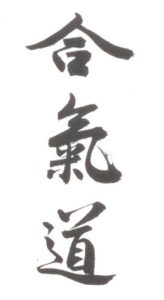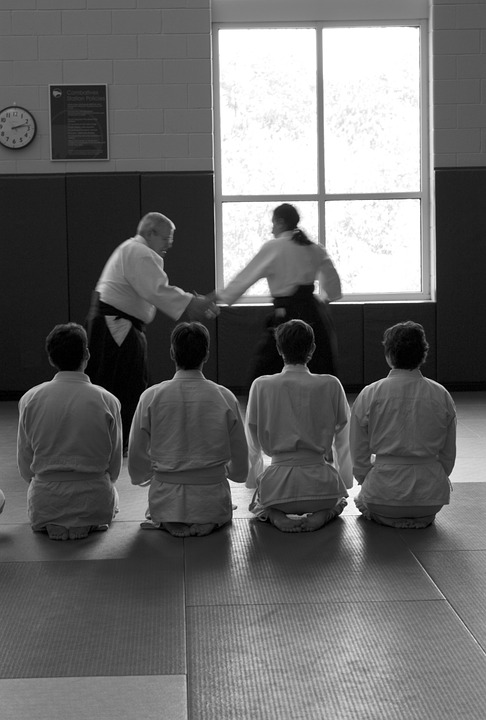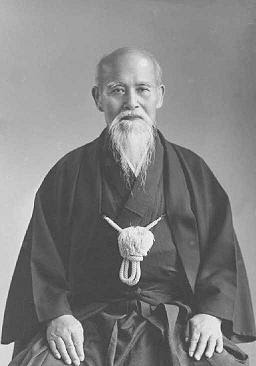Aikido originated in Japan at the beginning of the 20th century, from the work of Master Morihei Ueshiba.
The name also defines the basic principles of aikido in particular:

AI: Harmony
KI: Energy, expasion
DO: The way
Unlike other martial arts, Aikido does not involve any form of agonism, in Aikido there is no desire to offend, in practice the two roles of attacker and defender (Tori and Uke) are constantly exchanged.
Not to offend in order to remain at peace with the spirits and nature, finding the perfect balance between the practised discipline and the spiritual nature of one’s life.
The path to follow lasts a lifetime, to achieve inner tranquillity and self-awareness.
The ‘Keiko’ training begins with the ‘Rey’ greeting to the Kamiza and the Master, as a sign of respect and gratitude, and to give time to leave everyday life behind and dedicate oneself completely to this infinite personal experience in search of oneself.
Ueshiba was born in 1883. He studied martial arts, particularly the art of the samurai from his master Takeda Sokaku, considered the last samurai of Japan at the time.
After meeting the leader of a religious sect, the monk Onisaburo Deguchi, O’Sensei followed him in his studies and managed to combine the martial aspect with the more philosophical and spiritual one.
Evolving more and more in his knowledge of Budo, in 1942 he decided to sum up his studies in a new art that he called Aikido.
Already in 1927 he began teaching Aikido in Tokyo, where the most representative centre of Aikido in the world was born.
He died in 1969, leaving an enormous technical and spiritual legacy to his first pupils (Uchi-Deshi) who would continue to develop it throughout the world, each with their own imprint, to the point of creating different styles, yet recognising themselves in a single breath.

Morihei Ueshiba

Morihei Ueshiba is the inventor of Aikido. Regarded as one of the greatest martial arts masters in the world, he is called the Ōsensei (grandmaster) by aikidōka.
